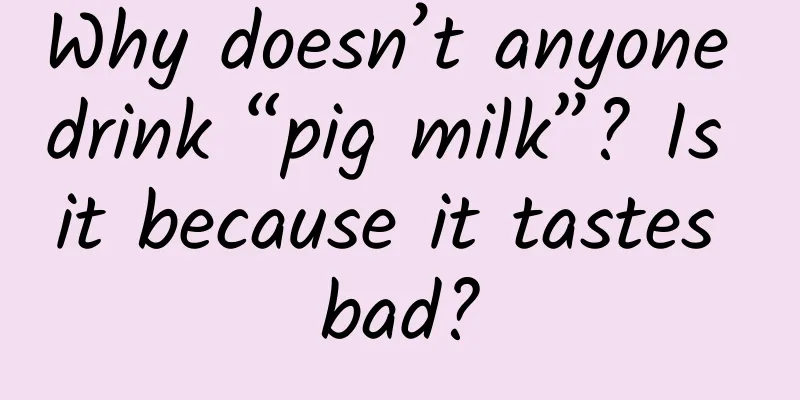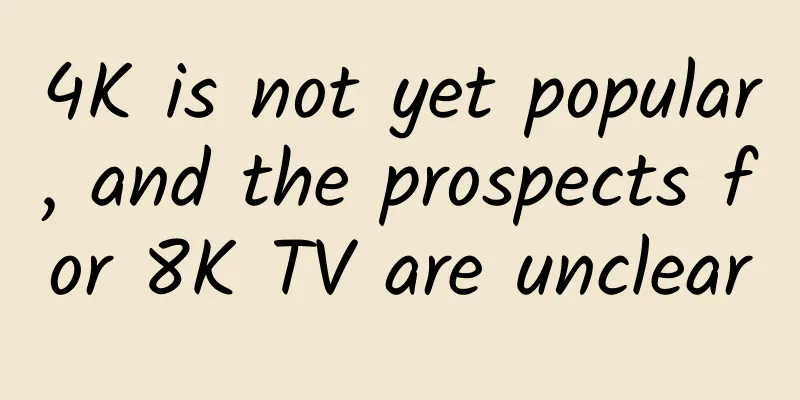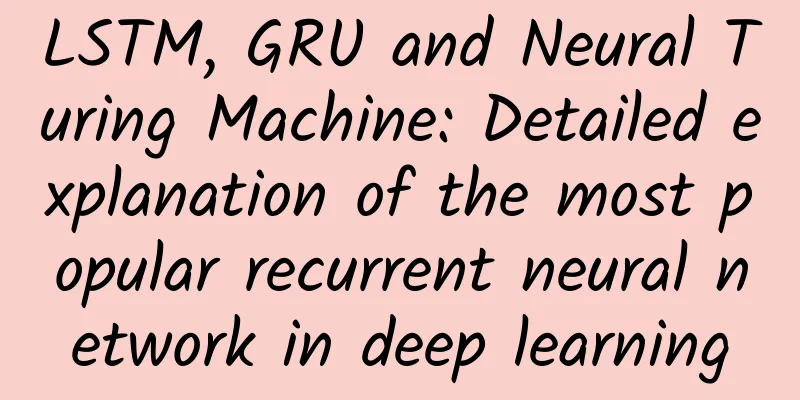Brand marketing promotion丨These 3 methods make products more popular with users!

|
Anyone who does marketing knows that with the cost of acquiring new users remaining high today, cultivating old users is the core of marketing. Some even say that the cost of developing a new user is 10 times that of an old user, and even higher for some industries. Why do people like loyal old users? Because old users have a high degree of recognition of products and brands and have low conversion costs; old users are also the foundation of the brand's user pool and the brand's moat, and are more willing to grow with the brand; at the same time, old users are the brand's natural disseminators and can bring in more new users at a lower marketing cost. If a brand only develops new users but does not have good management of old users, it will not last long and will become increasingly difficult to operate. Of course, cultivating old users is a long-term task that requires the establishment of a complete management and operation system, and only through gradual operation can it bear fruit. Before that, there is a problem that marketers need to solve more urgently: Users loved our product at first, but stopped using it after a while! If the product is not good, users will feel cheated after using it for a while and of course they will not use it again, and there is nothing the thief can do about it. But the product is a good product that can really bring value to users and help solve problems, so they like it very much from the beginning and think that this product is great. But what's the problem? Why do you give up using a product even though you think it’s great? Since it is not a product benefit issue, there must be other reasons, such as being used to the old ways; not wanting to change; not being able to feel oneself changing; not having enough motivation to use new products and not wanting to expend extra energy, etc. At this point, there is little point in continuing to talk about how good the product is. Just like most people agree that running and exercising more is right and good for health, they may run a few times occasionally on a whim, but gradually it will become a thing of the past. You can't solve this problem by constantly stressing that it's important to exercise more and that running is good for your health. What should I do? Lao Zei recommends 3 thinking directions to make users more willing to continue choosing you. 01. Create short-term incentives If your boss gives you a project, which of the following statements will make you work harder to complete the project? "If you do this project well, it will be very helpful for your future development, and you may even become a CEO in the future." "If you complete this project, you will immediately receive a 50,000 yuan project bonus." I guess it's the second one. Every action taken by everyone needs to be motivated, and compared to immeasurable benefits in the future, we prefer short-term visible incentives, which will make our actions more motivated. Get 300 yuan immediately or get 600 yuan in a year, what would you choose? I think most people would choose to get 300 yuan immediately. Although it is wiser to get 600 yuan a year later, it cannot be obtained immediately, while the 300 yuan that can be obtained immediately is obvious and right in front of you, so the value is more obvious. So, sometimes your product is really good, but it takes a long time to use it to see the long-term effects, not immediate effects. Most users may give up using your product and turn to products that they think will "work faster," even if these products are not as good as yours. At this time, you need to create short-term incentives for users to satisfy their "short-term benefit" preferences. For example, Qutoutiao, a new generation content information APP, achieved explosive growth from 0 to more than 6 million users within 10 months after June 2016. It was officially listed on the Nasdaq Stock Exchange in September 2018. The speed of development is astonishing. A very core key to Qutoutiao's success is to create short-term incentives for users. Their main selling point has always been "earn some pocket money by reading Qutoutiao". You can get cash rewards by reading the news every day; various activities are offered continuously, and rewards such as treasure chests and benefits make reading more valuable; you can also make money by inviting friends to read together... Anyway, there are cash rewards everywhere, which is very motivating and tempting for the people in the sinking market that they mainly target. Because there are already behemoths like Toutiao for reading information, it is difficult to get users to read your headlines. But it is different if you can make money by reading information. This is a more short-term incentive than reading entertainment gossip, and it will allow you to complete the task quickly. The same goes for the large-scale subsidy programs of Didi Kuaidi, Ele.me, and Meituan at the time. If you want users to change their past habits and continue to use your product, the benefit of "convenience" alone is definitely not enough. At this time, adding an immediately visible short-term benefit: "A passenger will get a 10 yuan discount each time he takes a taxi, and the driver will get a 10 yuan subsidy each time he picks up a passenger" can immediately bring about a powerful change. Once users form a habit, short-term incentives such as subsidies will no longer be needed, and may be replaced by other incentives. Of course, what drives us to act immediately is not the short-term incentive itself, but the little surprises brought by short-term incentives. Money is a type of incentive, but it is just one of them, and the effect is getting weaker and weaker now. For example, if you offer 5 yuan to ask others to scan a code, no one will do so. The most important thing is that users can get surprises beyond their expectations when using the product. For example, toothpaste is a particularly good example. Brushing teeth has become an indispensable habit in our lives, and we feel uncomfortable if we don’t brush our teeth for a day. In fact, when toothpaste first came out, it had no taste. Later, Hopkins, the founder of Pepsodent toothpaste, added citric acid, peppermint oil and other substances to the toothpaste ingredients. People would have a pleasant fragrance after brushing their teeth, and this feeling made people feel that their mouths were indeed cleaner. So in the end, his toothpaste sold better and better. Nowadays, the fresh scent after brushing your teeth every day has become a symbol of oral hygiene. If there is no fragrance when you exhale after brushing your teeth, we will think that we did not clean them thoroughly or the toothpaste we used is not good, right? And this "fragrance" is the short-term incentive brought by toothpaste. Compared to brushing your teeth, the long-term benefit of cleaning your mouth is easier to perceive. In short, every action taken by everyone needs short-term incentives, and the incentive is to bring surprises to users. And if the incentive is unchanging, it is not a surprise, it will lose its appeal over time. Thinking about "variable surprises" is the key to maintaining users' long-term interest. 02. Provide feedback/progress There is a famous compound interest effect in economics. It refers to a numerical value with a very small base number. Through a simple mathematical formula calculation, each time it will increase by a certain proportion based on the previous time. After executing it several times, it will form an explosive growth and bring huge effects. Although the compound interest effect is used in all walks of life, it has a major flaw that prevents many people from enjoying the huge returns it brings. Because in the compound interest effect, the initial increase in efficiency is very low, so low that you can't even feel the growth. Only with the passage of time and after countless repetitions will it grow rapidly and bring magical effects. So why do so many people give up halfway? Because after investing a lot, he didn't get any feedback and couldn't feel the progress of things, so he stopped taking action. Similarly, any action and change made by the user involves a large investment of time, energy, money, etc. If he does not get any feedback, he will not know how well he has done, to what extent he has achieved it, or what effect it has brought to himself. Why do you let him continue? You said: "Don't worry, persistence will lead to victory, and you will get a huge reward later!" But people like the sense of control, have no confidence in things that they cannot see or touch, and are full of doubts. No matter how good your product is, it will be difficult for them to stick with it. At this time, you need to provide feedback/progress to users, find ways to let them see the results of their past efforts, let them know what progress they have made, what level they have reached, what specific changes have been brought about, what areas need improvement... and so on. For example, I used to love playing online games. At that time, my biggest motivation might be the level experience progress bar of the game character. Every day I thought about how to kill monsters and level up, and I would go online to level up whenever I had time. Why? Because the best thing about almost all online games is that the real-time feedback and progress are done very well. Every move I make will receive real-time feedback. As long as you make an effort, you can see feedback in real time. I know where all my tasks are at, and I know what to do next. For example, after leveling up for a day, I know how much experience I have gained; wearing a gem, the character's agility value is +1; a magic weapon explodes, the strength value is +100; killing a boss, I know that I have completed a dungeon and what the next goal is... In addition, many products of the fitness brand Keep have made perfect use of the function of "providing feedback/progress", no wonder they have always been popular with users. For example, the Keep home smart treadmill is not only perfectly compatible with Keep's professional running courses, but most importantly, it can simultaneously record running data, analyze running results, and give you real-time progress feedback on the treadmill. The effect is obvious and it is easier to stick to it. The professional data feedback is so addictive that you will never feel that your exercise is fruitless. There is also a smart body fat scale that does the same thing, synchronizing 15 professional data of your body and providing real-time feedback. And their copywriting is: "Remember every effort and every change you make, and keep physical data and operational data together." 03. Create a sense of crisis If benefits cannot motivate users to take action, then crisis may make them take the initiative. Fear is the greatest weakness of human nature, and learning to be afraid is an instinct of human self-protection. Our ancestors discovered and continued the fire because they were afraid of wild beasts and the darkness; they began to learn to grow food and domesticate livestock because they were afraid of hunger. Fear is the inevitable result of human adaptation to the environment and a continuous source of motivation for human action. When people are faced with equal gains and losses, they will find it more difficult to tolerate losses, and we care more about the unhappiness brought by losses. If not doing something means losing something we love, we are more willing to take action to protect ourselves. For example, we often see such words on the Internet: "You missed Taobao 10 years ago, Weibo 8 years ago, and WeChat Official Account 5 years ago. Do you want to miss Mini Programs now?" It creates a sense of crisis in users, making them realize that if they don't change, they may be eliminated. If your product is great but users just can’t keep using it, you can try to create a sense of crisis in them and stimulate their self-protection instinct, which is often very effective. The sentence "You are out of date, you can't even play TikTok" may prompt many people to download the TikTok APP and even force themselves to learn how to play it. So how can we give users a little sense of crisis? There are three points that need special attention: 1) Severity of the crisis – How serious would the crisis be if it actually occurred? How much loss and damage will it cause? 2) Crisis vulnerability – Is the crisis likely to occur? It is not enough to just say that the crisis is serious. It is necessary to explain that "the crisis is very likely to happen" so that arouse a real sense of crisis. 3) Solution to the crisis - Can your solution effectively reduce the crisis? And is it easy to implement? If consumers believe your solution does not eliminate the threat or is too difficult to implement, it will be in vain. In short, first explain the serious crisis you are facing, and then make sure to explain that this threat is likely to occur. Only then can the immediate threat bring a real sense of crisis, and only corresponding reliable plans can allow people to protect themselves immediately. Okay, that’s all for today. To sum it up simply: Create short-term incentives to surprise users; provide feedback/progress to allow users to perceive real-time changes brought about by actions; shape a sense of crisis and stimulate self-protection instincts - make users more willing to continue taking action! I hope this helps you all. Related reading:1. Marketing promotion planning: 80% of event planning mistakes are easy to make! 2. With a continuous monthly growth of 50%+, how can brand marketing promotion go from 0 to 1? 3. A must! 18 hot spot tracking tools for marketing and promotion operators! 4. How to plan marketing activities for those festivals that are “difficult” to leverage? 5. Brand marketing promotion: the underlying logic behind Durex’s content marketing! 6. Brand marketing promotion: How to learn the product placement of “The Debaters”? 7. Brand marketing promotion rules: How to construct a marketing framework? 8.2019 Internet Marketing Promotion Tips! 9. Marketing promotion: How does fission marketing achieve market “fission”? Author: Mumu Old Thief Source: Mumu Laozei |
<<: Analysis of Through Train Promotion Skills
>>: How to review activity operations!
Recommend
The latest AI real-person intelligent virtual anchor and video creation tool!
The latest AI real-person intelligent virtual anc...
Qian Sanqiang: Founder of China's Atomic Energy Science | Childhood of the Hero of "Two Bombs and One Satellite"
Qian Sanqiang, a nuclear physicist, is the founde...
Guang'an Mini Program Agency Company, how much does it cost to be an agent for a flower mini program?
How much does it cost to be an agent of Guang'...
August 2023 "Science" Rumor List: Can iodized salt prevent nuclear radiation? Does the Forbidden City never accumulate water?
The list of "scientific" rumors for Aug...
New brand, IP marketing methodology that is unwilling to be disclosed!
The global economy is recovering and growing in 2...
A year's plan begins in spring. Pay attention to these 7 points when doing spring exercises!
As the saying goes, a year's plan starts with...
iOS A Song of Ice and Fire – Using XPC to pass the sandbox
0x00 Sequence Ice refers to user state, and fire ...
Hisense's Liu Hongxin: Never rejected OLED, but more optimistic about laser display technology
Yesterday, we published the article "30,000 ...
On World Pangolin Day, can we wait for good news about pangolins?
Today - the third Saturday in February - is World...
Complete list of product promotion channels in 2019!
Many advertisers will ask what channels are avail...
The future has arrived: Haier kitchen appliances enter the era of IoT intelligent collaboration
In recent years, with the continuous increase in ...
Which is cooler, iced coffee or iced cola? The correct answer is...
On hot days, besides air conditioning, the best t...
The real “killer feature” of new technology: perhaps it is not “reading the brain” but “reading behavior”?
When Simon McCarthy-Jones wrote an article about ...
All copywriting cannot escape these six doors
Why can’t I write a copy no matter how hard I try...
Don't be obsessed with bananas when you are constipated! This fruit can help you defecate smoothly, it is cheap and delicious
Constipation has long been on the list of urban p...









